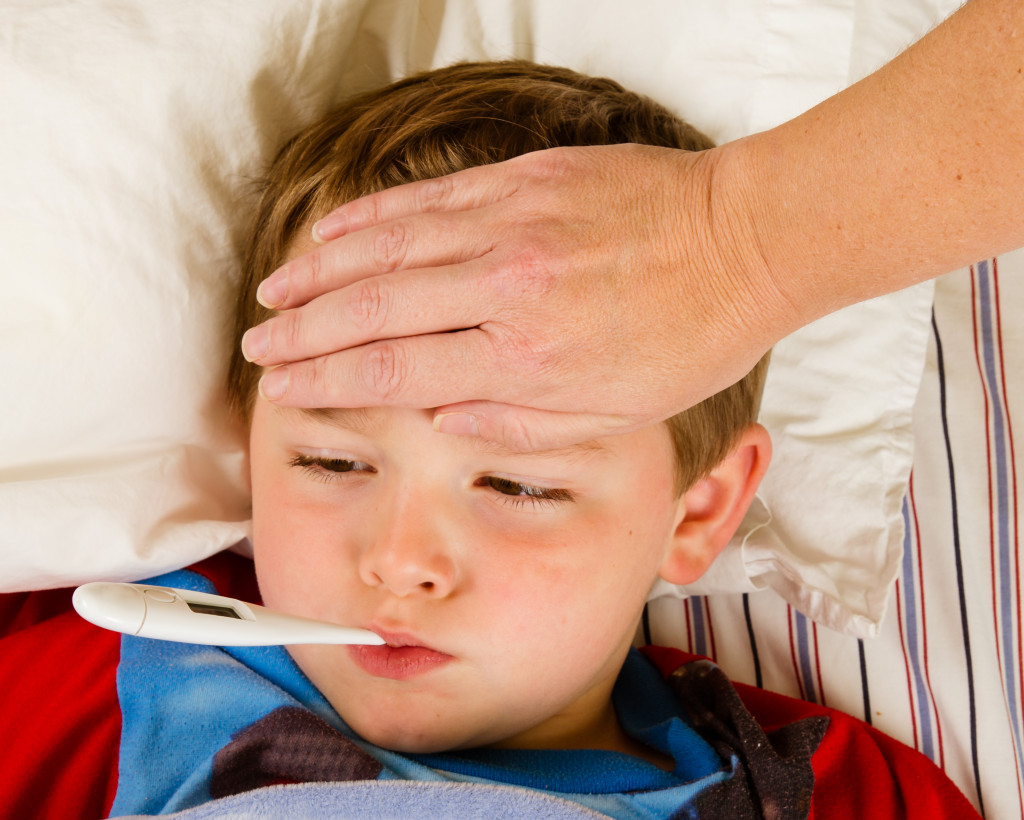Living in a rural area definitely has its perks – fresh air, gorgeous landscapes, and plenty of peace and quiet. But it also has drawbacks, one being that your kids are more likely to catch common illnesses. In this blog, you’ll learn about some of the most common illnesses that kids in rural areas tend to get and some tips on how to prevent them:
Meningitis
One of the most serious health dangers for families residing in rural areas is meningitis, an inflammation of the covering of the brain and spinal cord caused by bacterial or viral infection. Meningitis can be spread through direct contact with saliva or other body fluids from someone who is already infected. As this type of contact may be more common in rural areas than in urban ones, it is all the more important to be aware of its dangers and take appropriate measures to minimize risk.
Make sure your children receive all recommended vaccines, take extra care to practice good hygiene habits such as frequent hand washing, and stay up to date on potential outbreaks in your area.
Lyme Disease
Lyme disease is a bacterial infection spread by ticks that often hide in tall grass, wooded areas, and shrubs. While anyone can get Lyme disease, children are especially vulnerable because they tend to play outdoors more and may not know how to identify the signs of infection. Symptoms include fever, fatigue, skin rash, and joint pain. The disease can cause serious complications like neurological problems and heart issues if left untreated. To prevent Lyme disease, it’s important to use insect repellent when outside and do regular tick checks on your kids.
If your children catch Lyme disease, take them to a medical institute immediately. They’ll likely need to undergo antibiotic treatment to eliminate the infection and prevent further complications. Hyperthermia for treating Lyme disease may also be utilized. This involves immersing the affected body part in warm water. The increased temperature helps to kill off the Lyme disease bacteria. Following these tips and being aware of the risks can help keep your children safe from Lyme disease while living in a rural area.
Asthma and Allergies
In rural areas with more open space and greenery, there is also an increase in pollen exposure, leading to higher asthma cases among children living there compared to urban areas.
Your child might experience symptoms such as wheezing, coughing, shortness of breath, chest tightness, or even fever, so be sure to watch out for any changes in their behavior. Additionally, allergies can cause symptoms such as sneezing, runny nose, headaches, and watery eyes.
Speak with your doctor about possible treatments, including medications or allergy shots, that may help manage these illnesses better. You can also take steps to reduce your child’s exposure to triggers like pollen, dust mites, mold spores, and pet dander. You can do this by using air filters and vacuums with high-efficiency particulate air (HEPA) filters, keeping the humidity low in your home, and taking care to prevent exposure to outdoor allergens.
Influenza and RSV

Influenza is a respiratory illness caused by viruses that attack the lungs, whereas RSV (Respiratory Syncytial Virus) affects the lungs and airways. Both illnesses can cause fever, congestion, coughing, sore throat, or body aches, so it’s important to seek medical attention right away if you think your child might have one of these infections.
The best way to prevent influenza is through annual vaccinations, while there’s no vaccine available yet for RSV. Practicing good hygiene habits, such as washing hands regularly, will help reduce the risk of spreading these infections.
Mumps
Mumps is an infectious disease caused by the mumps virus, which is most commonly spread through saliva or mucus from an infected person. It can be spread through close contact with another person, such as coughing, sneezing, or kissing. Symptoms include fever, headache, fatigue, and swollen glands around the cheeks and jaw. Mumps is most common in children, and the best way to prevent it is by getting the mumps vaccine.
If your child does come down with mumps, you can take them to an urgent care center or doctor’s office for treatment. The main treatment is rest and taking over-the-counter pain relievers like ibuprofen or acetaminophen to reduce discomfort.
Keeping your family healthy when living in a rural area requires extra effort since there’s limited access to medical care and different living conditions than those found in urban areas. Fortunately, knowing what illnesses exist at higher levels in these areas allows parents to take preventive measures against them, like using insect repellent when outdoors or getting vaccinations when needed. Be sure to talk with your doctor about what other steps you can take depending on where you live!
